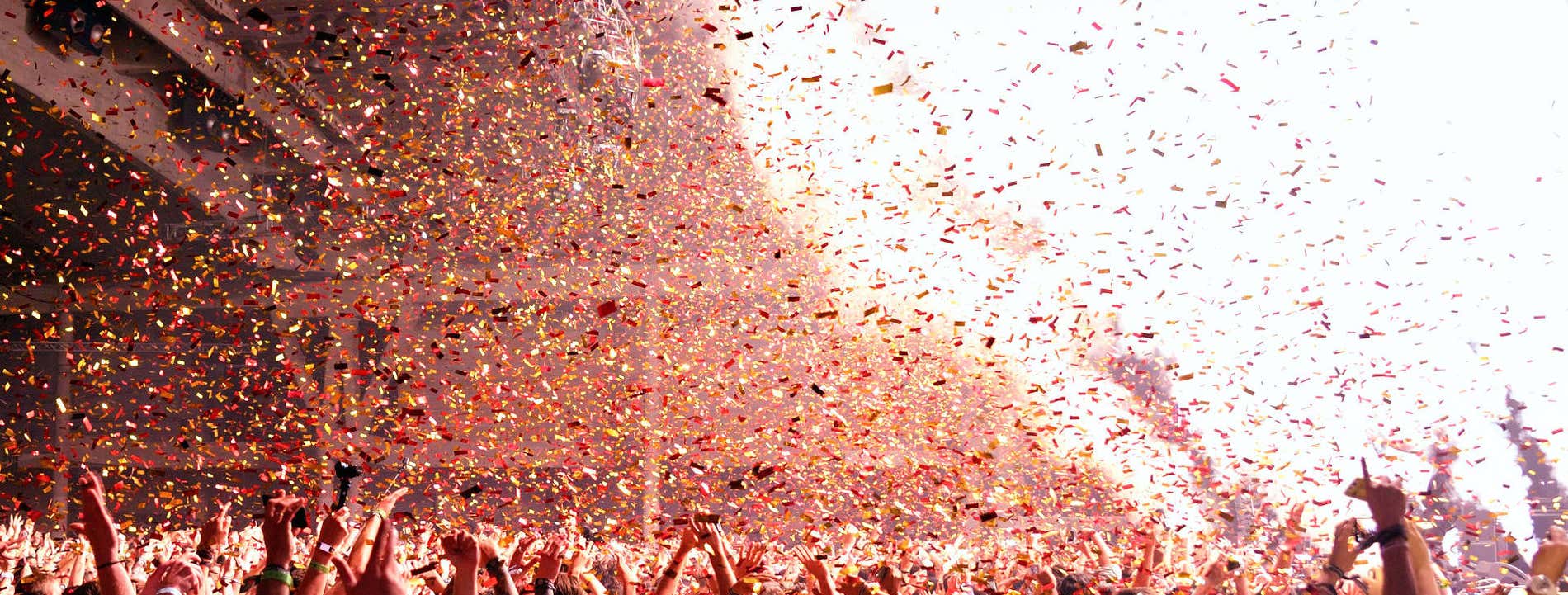Top 15: Things to Do in Curaçao (+ Travel Tips)
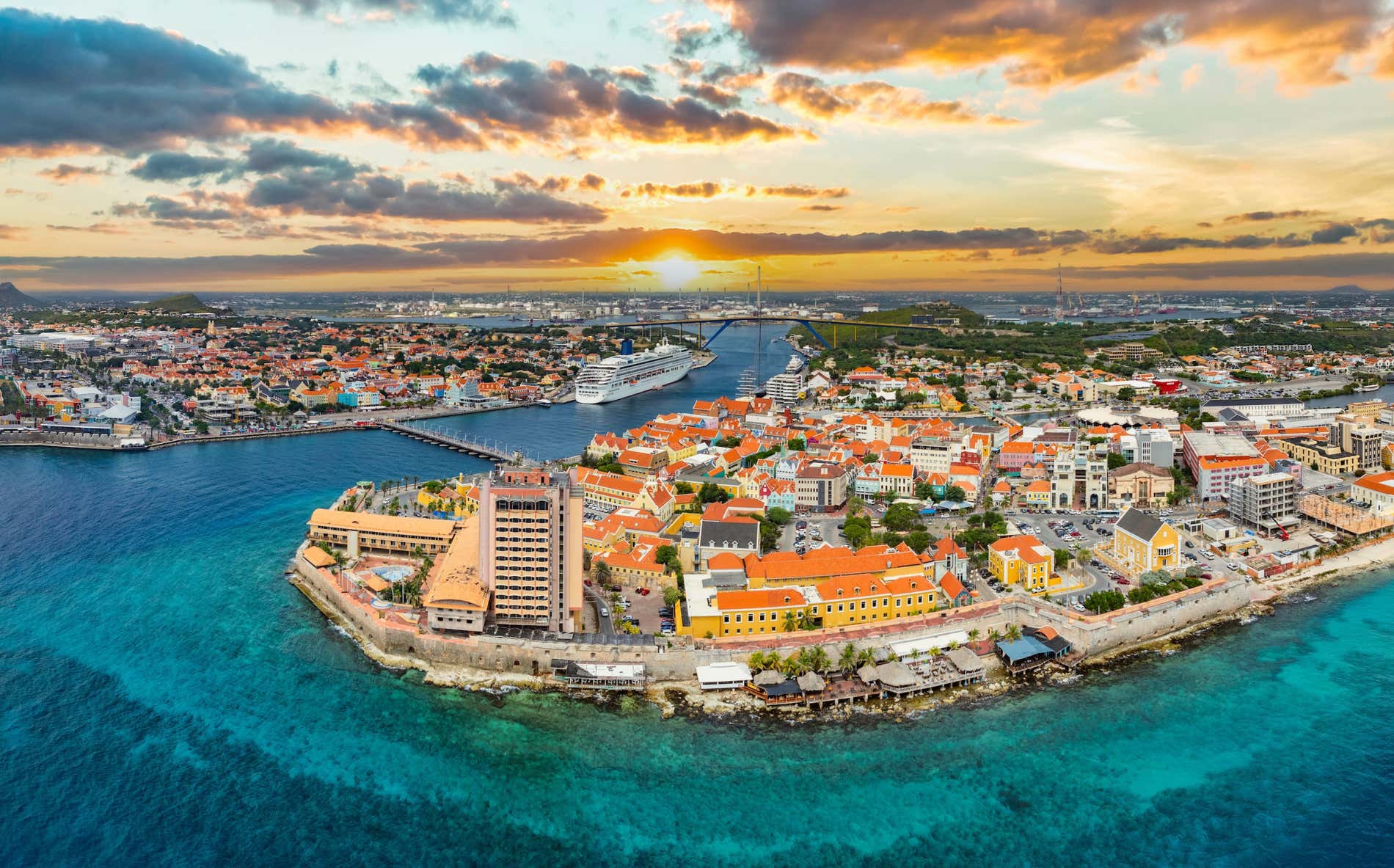
Curaçao is a fascinating island destination, quite unlike anywhere else in the Caribbean, and indeed, in the world! Just 40 miles (65 kilometers) off the coast of Venezuela, this island is technically part of the Kingdom of the Netherlands, and many of the island’s tourists come from there. There are lots of reasons to visit Curaçao.
Enjoy the island’s stunning nature and weather, lovely colonial architecture, relative value compared to other Caribbean destinations, and water activities like snorkeling and scuba diving. Today at Civitatis, we’re going to divulge 15 great ways to enjoy yourself while visiting this quirky holiday destination. Read on to find out the best things to do in Curaçao!
1. Enjoy a Guided Tour of Curaçao
Kick off your adventure with a guided tour of Curaçao. This journey across the island will introduce you to its must-see spots—from vibrant neighborhoods and breathtaking beaches to hidden gems like the Shete Boka National Park. It’s the perfect way to get acquainted with the layout of the island, gain some insights into local culture, and discover some secret treasures that you may never have found otherwise!
Also, discover the Scharloo district, a former plantation that has become a neighborhood in Willemstad, and a UNESCO World Heritage Site. Enjoy Scharloo’s distinctive Caribbean/Colonial cultural and architectural fusion. This tour also includes a delicious local lunch!
2. Visit Curaçao’s Beaches
No trip to Curacao is complete without spending some quality time on its gorgeous beaches. The island boasts over 35 beaches, ranging from small secluded coves to expansive stretches of white sand. Some favorites include:
- Playa Kenepa: Split into two areas—Grote Knip (Kenepa Grandi) for a lively vibe, and Klein Knip (Kenepa Chiki) for a more relaxed experience.
- Cas Abao Beach: Often hailed as one of the most beautiful beaches in the Caribbean, complete with full facilities like restaurants and lounge chairs.

- Playa Porto Mari: Ideal for snorkeling among pristine coral reefs, with the added bonus of wild pigs occasionally making an appearance.
- Jan Thiel Beach: For a touch of sophistication, this beach features chic bars, restaurants, and a vibrant atmosphere.
- Mambo Beach: Perfect for those who enjoy a bustling scene with shops, dining, and lively events.
- Playa Piskado: Also known as Playa Grandi, it’s the go-to spot for swimming with sea turtles.
- Playa Lagun: A small, tranquil cove surrounded by cliffs, ideal for families and nature lovers.
- Klein Curaçao: A deserted island accessible by a two-hour boat trip, offering an untouched slice of paradise.
If you want to visit a few of these paradises, be sure to check out this beach tour to Piskado, Kenepa & Cas Abao. Or, sail the southern coast of the island on this Klein Curaçao Catamaran day trip.
3. Enjoy a Cruise in Curaçao’s Waters
Take in the beauty of Curaçao from a different perspective by enjoying a leisurely boat cruise. Whether you choose a serene cruise through Spaanse Water at sunset, where you can marvel at the ever-changing colors of the sky and water, or opt for a more interactive glass-bottom boat tour that lets you witness the vibrant marine life below, this is an experience you won’t want to miss.
4. Go Snorkeling
Curaçao is the perfect destination for water sports, thanks to its clear, turquoise waters and thriving coral reefs. Snorkeling is a favorite activity here, offering an up-close view of the island’s diverse marine life and preserved coral ecosystems. You can delve into this underwater world on a snorkeling trip in Caracas Bay, or, you could opt for this unique seawalker experience in Willemstad to get a different perspective of the underwater world. There are also plenty of options for paddle boarding, kayaking, windsurfing, kitesurfing, and parasailing, ensuring that there’s something for every type of water enthusiast.
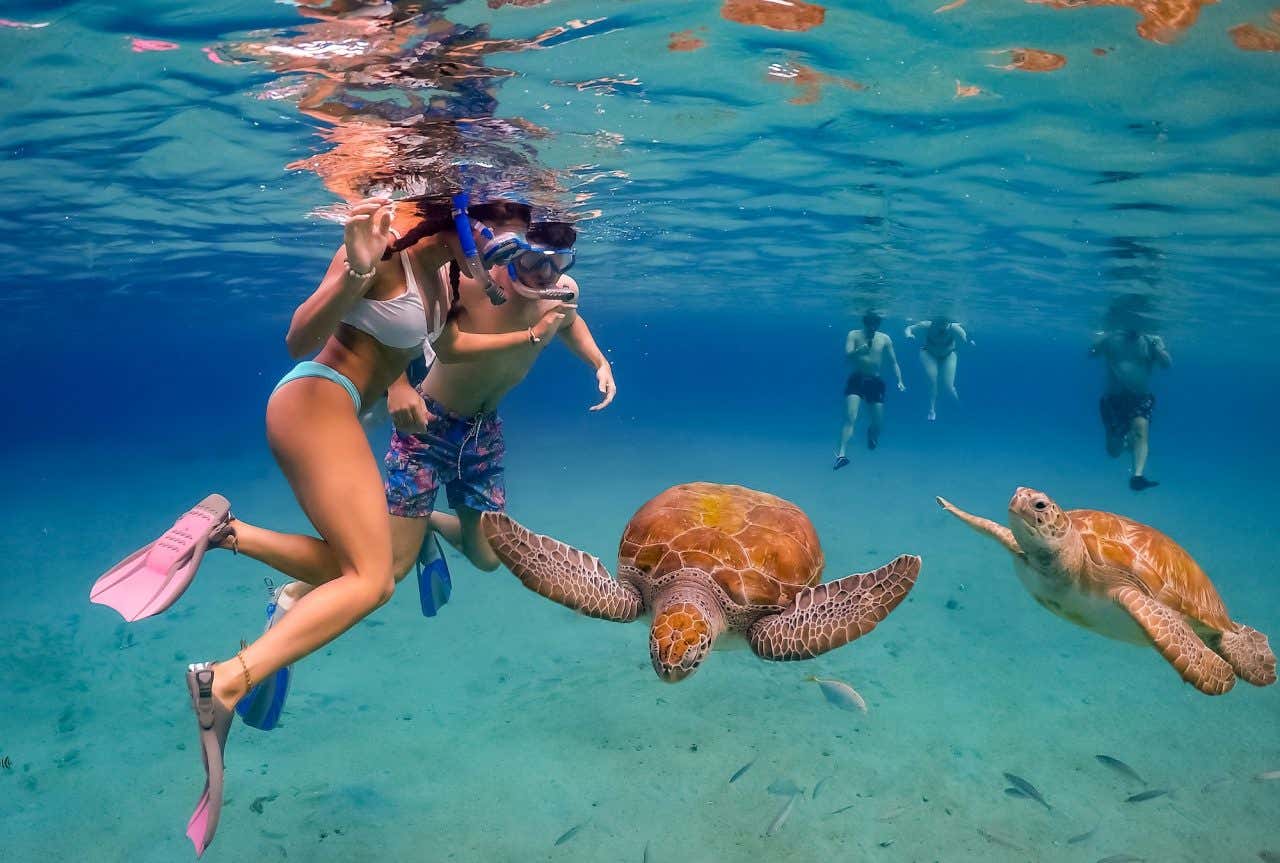
5. Discover Willemstad
Willemstad, the capital of Curaçao, is truly the soul of the island. Stroll through its historic streets lined with colorful colonial buildings, and immerse yourself in the local culture and daily life. Recognized as a UNESCO World Heritage site, Willemstad offers a wealth of attractions. For a richer experience, join a guided tour of Willemstad to learn about its history and discover both the popular landmarks and the lesser-known treasures. Alternatively, hop on the Willemstad tourist train for a fun and unique way to see the city.
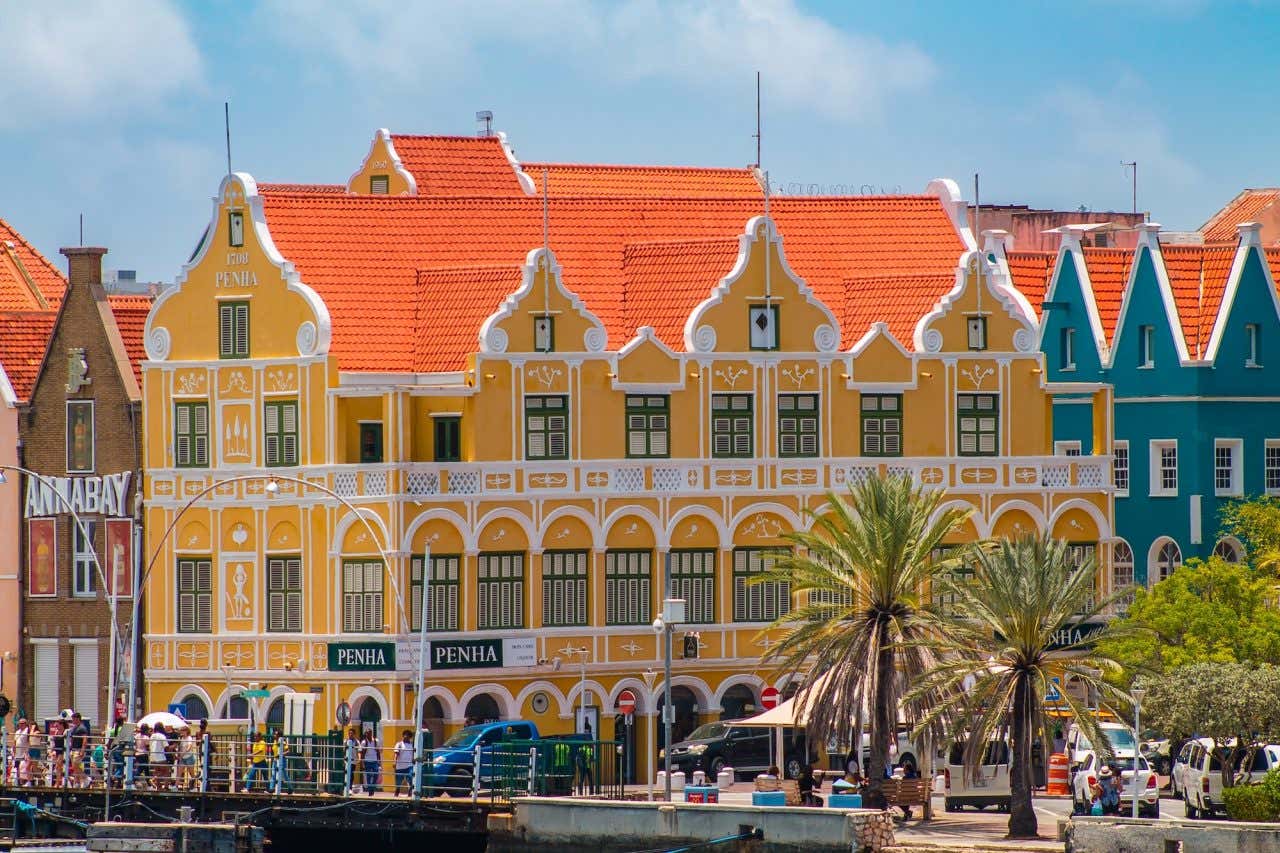
6. Cross the Famous Queen Emma Floating Bridge
One of the most iconic sights in Willemstad is the Queen Emma Floating Bridge—affectionately nicknamed the ‘Old Lady.’ This remarkable 550-foot-long (167-meter) bridge is composed of 16 wooden pontoons that move with the tide, allowing boats to pass freely. It connects the two main districts, Punda and Otrobanda, and provides fantastic views of the harbor and Willemstad’s skyline. When night falls, the bridge lights up, creating a dazzling display of reflections over the water.
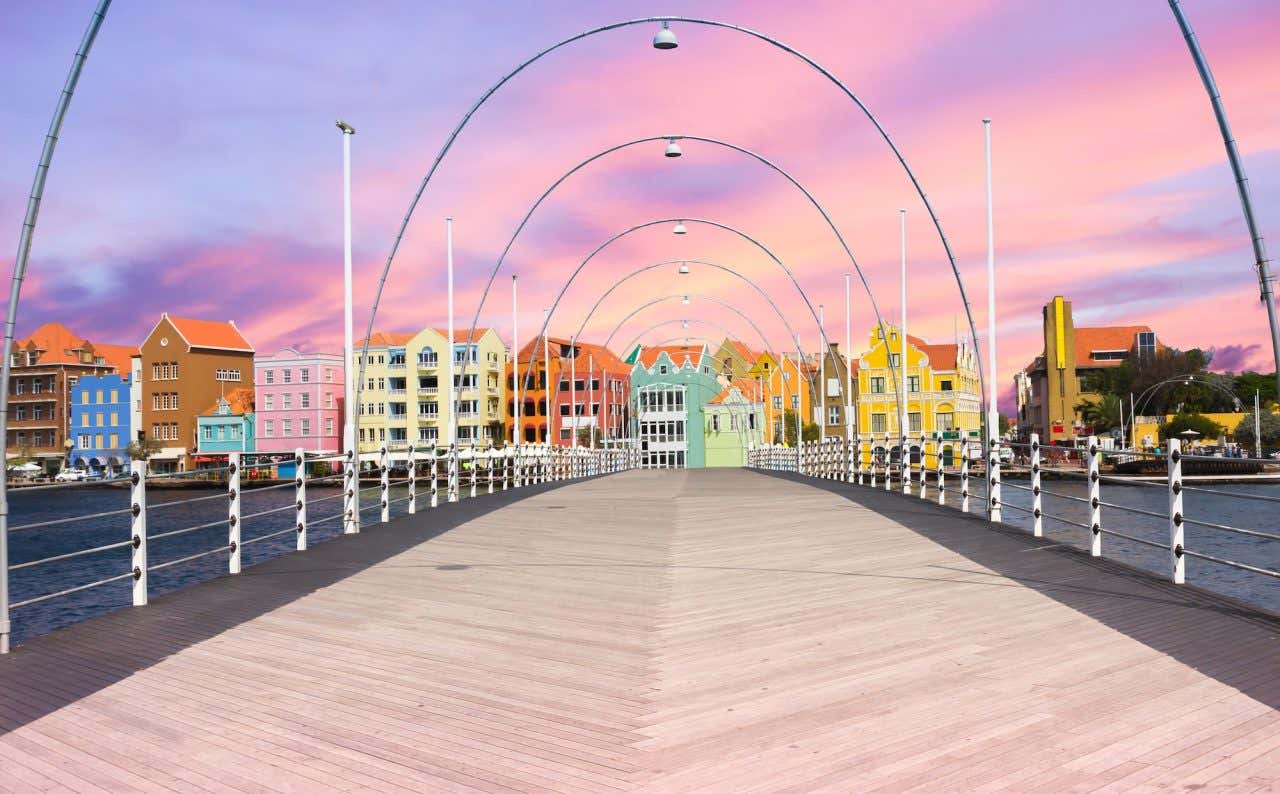
7. Explore the Punda Neighborhood
Step back in time in the historic district of Punda, founded in 1634 by the Dutch. With its narrow, winding streets, vibrant colonial architecture, and significant landmarks like Fort Amsterdam and the Mikvé Israel-Emanuel Synagogue (the oldest functioning synagogue in the Americas), Punda is a treasure trove of history and culture. Wander through its bustling streets to shop, dine, or simply enjoy the lively atmosphere. Don’t miss the floating market where local vendors sell fresh produce, as well as the Marshe Bieu—a traditional market offering authentic local dishes.
8. Take a Stroll on the Handelskade
Handelskade is one of the most photographed streets in Willemstad, famous for its row of colorful colonial buildings lining the waterfront of Santa Ana Bay. This charming promenade is just lovely for a leisurely walk, and provides great photo opportunities. As you’re walking along the waterfront, sit down and grab yourself a coffee or a meal at one of the seaside cafés. During festivals like the Curaçao Carnival, Handelskade comes alive with festive decorations, lights, and music, which makes it well worth checking out if you’re visiting at that time of the year.
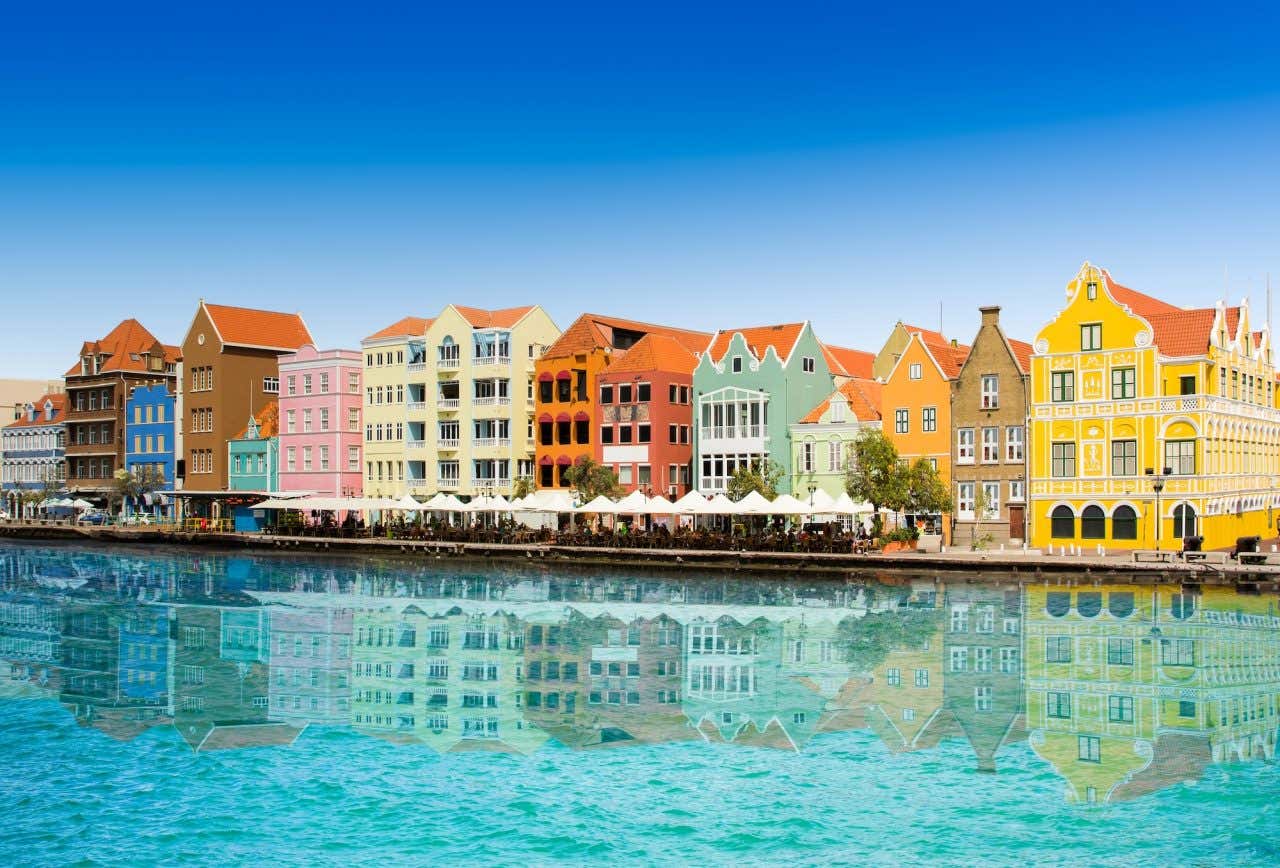
9. Take Photos at Wilhelmina Square
Located in Punda, Wilhelmina Square is a beloved gathering spot for both locals and visitors. Named in honor of Queen Wilhelmina of the Netherlands, who reigned from 1890 to 1948, the square features a statue of the queen and is surrounded by well-manicured gardens, benches, and panoramic views of Willemstad. It’s the perfect place to relax, snap some memorable photos, and take in the atmosphere of the city.
10. Visit the Waterfort Lighthouse and Fort
Explore a piece of history by visiting the Waterfort complex in Punda. Originally built in the 17th century to defend the entrance of Santa Ana Bay, the fort has undergone several renovations over the centuries while still retaining much of its original architectural charm. It also houses the Waterfort Arches, which were once used to store munitions, medical supplies, and food, but have since been converted to a restaurant area along the waterfront, where you can enjoy a meal or a drink while taking in breathtaking ocean views.
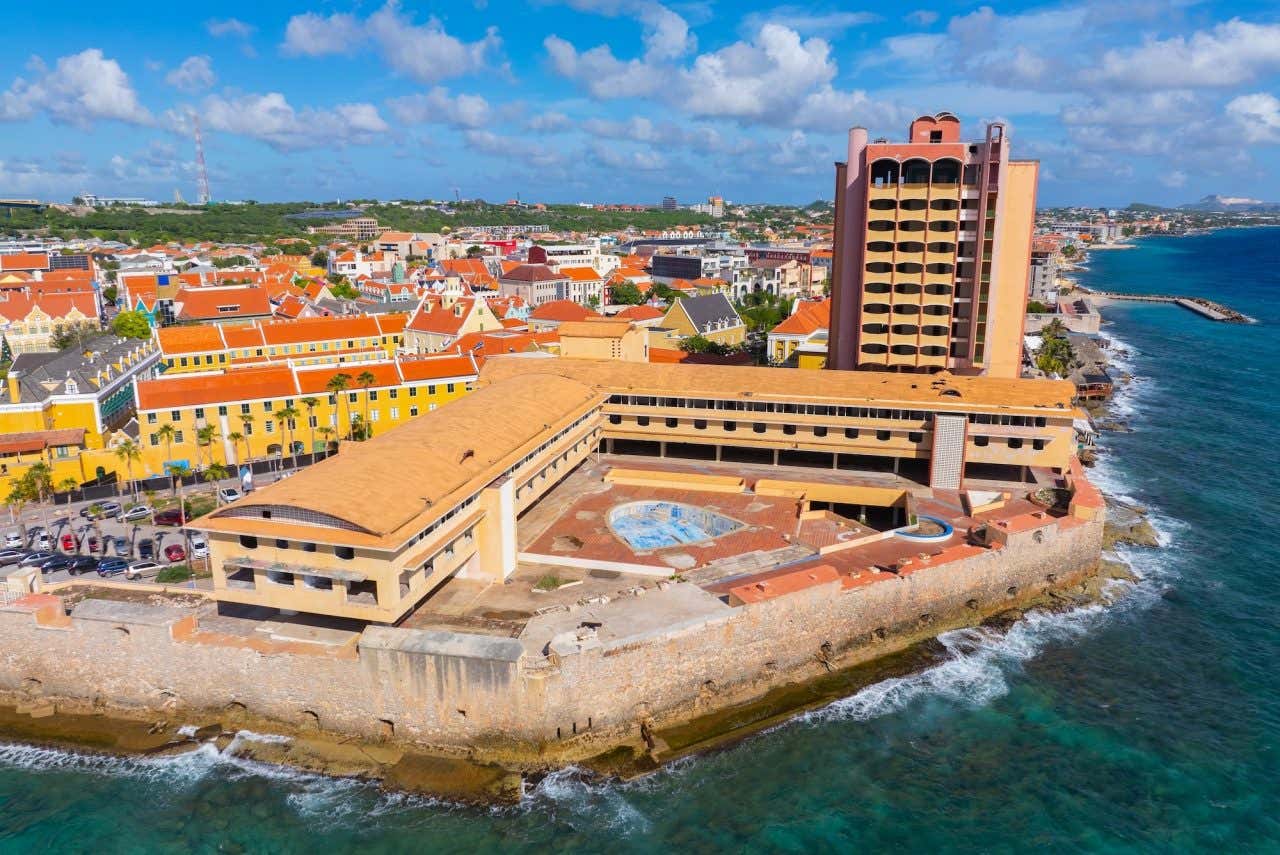
11. Explore the Otrobanda District
Cross over the Queen Emma Floating Bridge to discover Otrobanda, whose name means ‘other side’ in the Papiamento language. This vibrant district was founded in the 18th century, Otrobanda has evolved into one of the liveliest parts of Willemstad. The area’s highlight is the Rif Fort, a fortress built in 1828 to protect the harbor, now transformed into Rif Fort Village. This dynamic complex is filled with shops, bars, and restaurants, and offers stunning views of Handelskade and the Caribbean Sea. The streets of Otrobanda are also adorned with colorful murals, boutique shops, and cozy cafés, making it an essential stop on your Curaçao adventure.
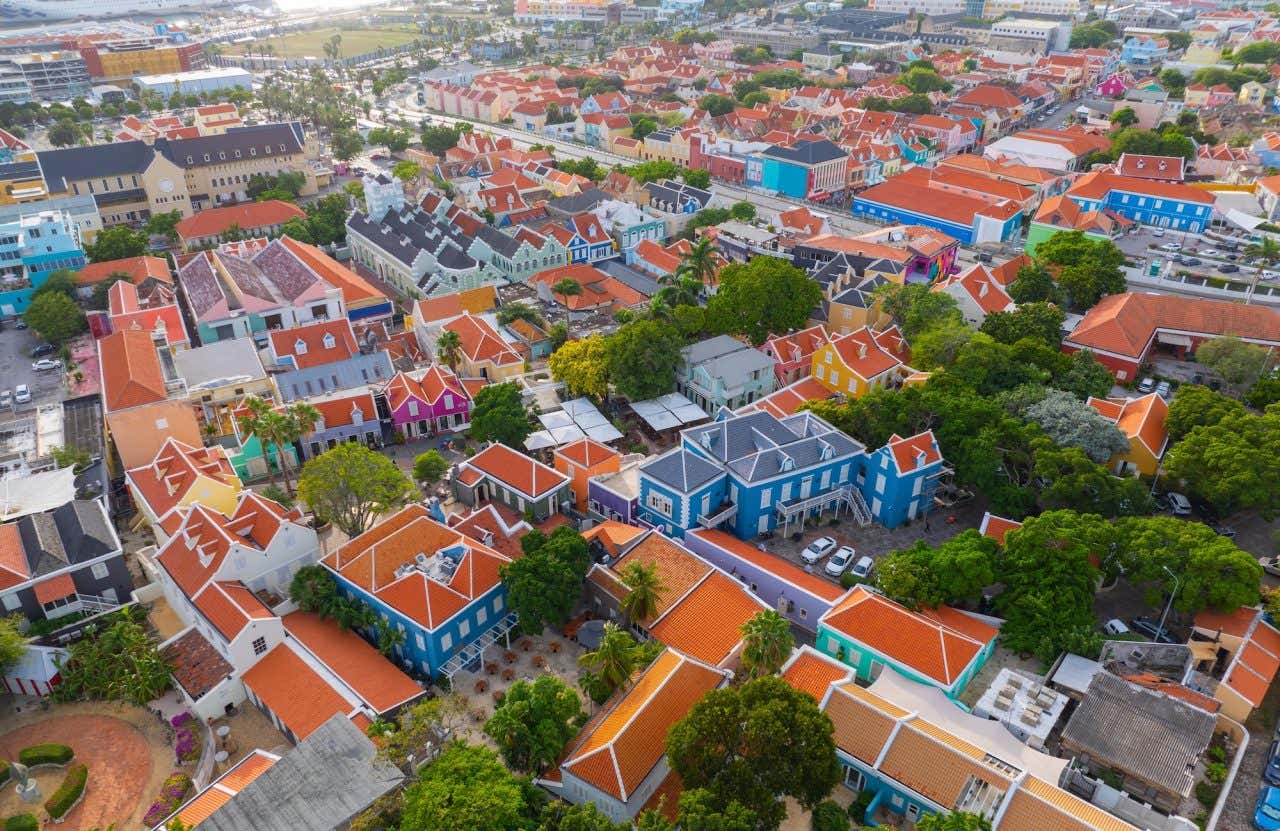
12. Immerse Yourself in History at the Kura Hulanda Museum
For those who appreciate a deep dive into history, the Kura Hulanda Museum in Otrobanda is a must-visit. This museum offers an extensive collection of artifacts, documents, and exhibits that explore the history of slavery, African culture, and the transatlantic slave trade. In addition to chronicling the darker chapters of history, the museum also celebrates the diverse cultural influences that have shaped Curaçao. Check it out!
13. Have Fun at the Curaçao Sea Aquarium
Located near Mambo Beach, the Curaçao Sea Aquarium is another one of the island’s top attractions, particularly popular among families. Opened in 1984, the Curaçao Sea Aquarium provides up-close experiences with the animals—feed flamingos, touch starfish, and get face to face with dolphins. With a diverse collection of tropical fish, turtles, rays, corals, and even sharks, the aquarium also offers educational programs that highlight the importance of marine conservation. Whats more, this aquarium’s water supply comes directly from the ocean creating natural conditions for its marine residents.
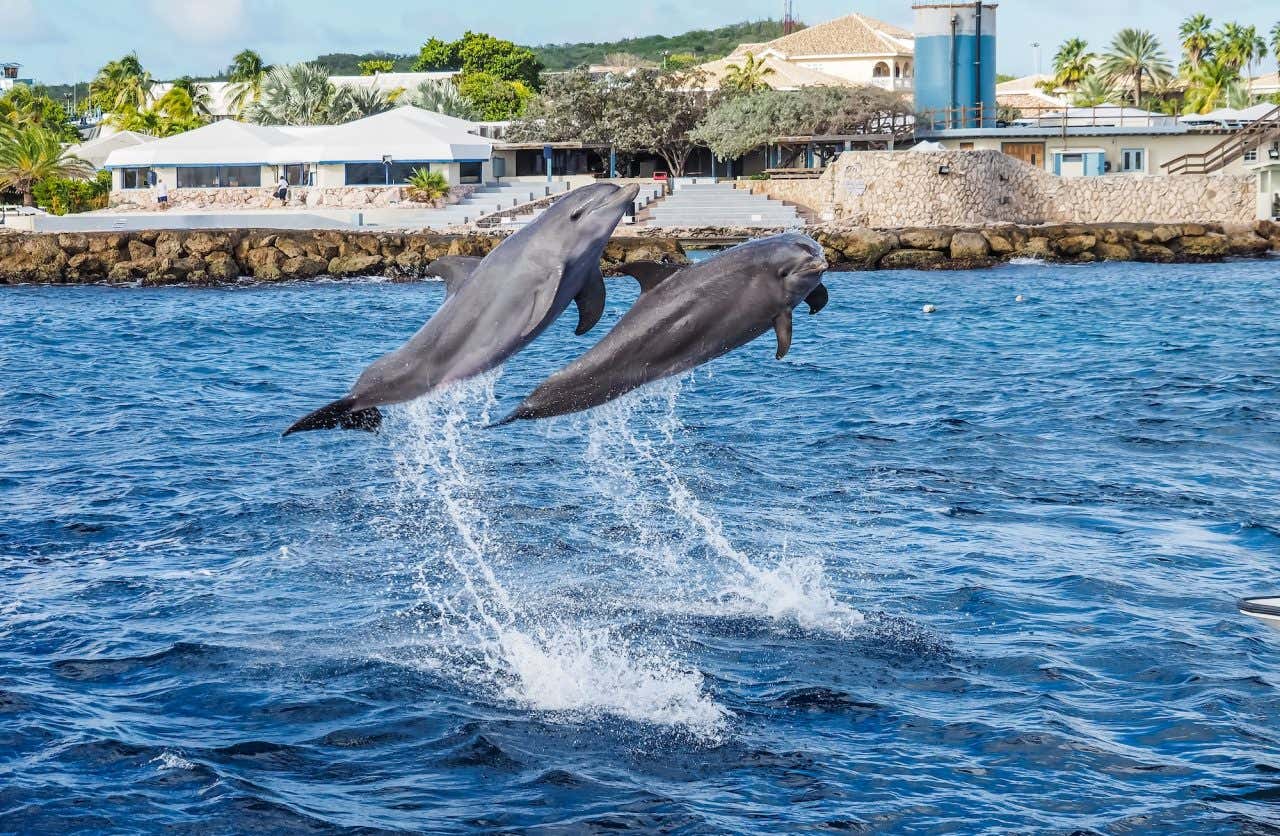
14. Savor Local Delicacies at Marshe Bieu
Known as the Old Market, the Marshe Bieu market is one of Curaçao’s most authentic gastronomic centers. Located in the Punda neighborhood, it’s one of the best places on the island to try authentic, traditional dishes, accompanied by a rustic and welcoming atmosphere.
Curaçao’s cuisine, known as ʻkriyoyo‘ food is characterised by a vibrant blend of flavors, stemming from a wide range of influences.
Try out Keshi Yena, Curaçao’s signature dish, consisting of baked cheese stuffed with spiced meat, olives, capers, onions, and tomatoes. Also try Kabritu (Goat stew) and Bitterballen (meatballs served as a bar snack). While you’re in Curaçao, we’d also recommend enjoying traditional Dutch snacks, given the island’s connection to the Netherlands. Particularly popular options include olliebollen and stroopwafels.
15. Visit a Blue Curaçao Distillery
You’ve probably seen the striking blue hues of cocktails like the Blue Lagoon or Blue Hawaiian—but did you know that one of the key ingredients, Blue Curaçao, is made right here on the island? This liqueur is crafted from the dried peels of the Lahara orange, a variety that grows exclusively in Curaçao. Introduced by Spanish settlers in the 16th century, these oranges have been transformed into an aromatic, slightly sweet drink through a special distillation process that also uses herbs and spices. Although generally produced in a bright blue, this spirit is also produced in orange, green, and red. Check out this Blue Curaçao distillery tour + tasting, where you can learn about the production process and sample this local treasure.
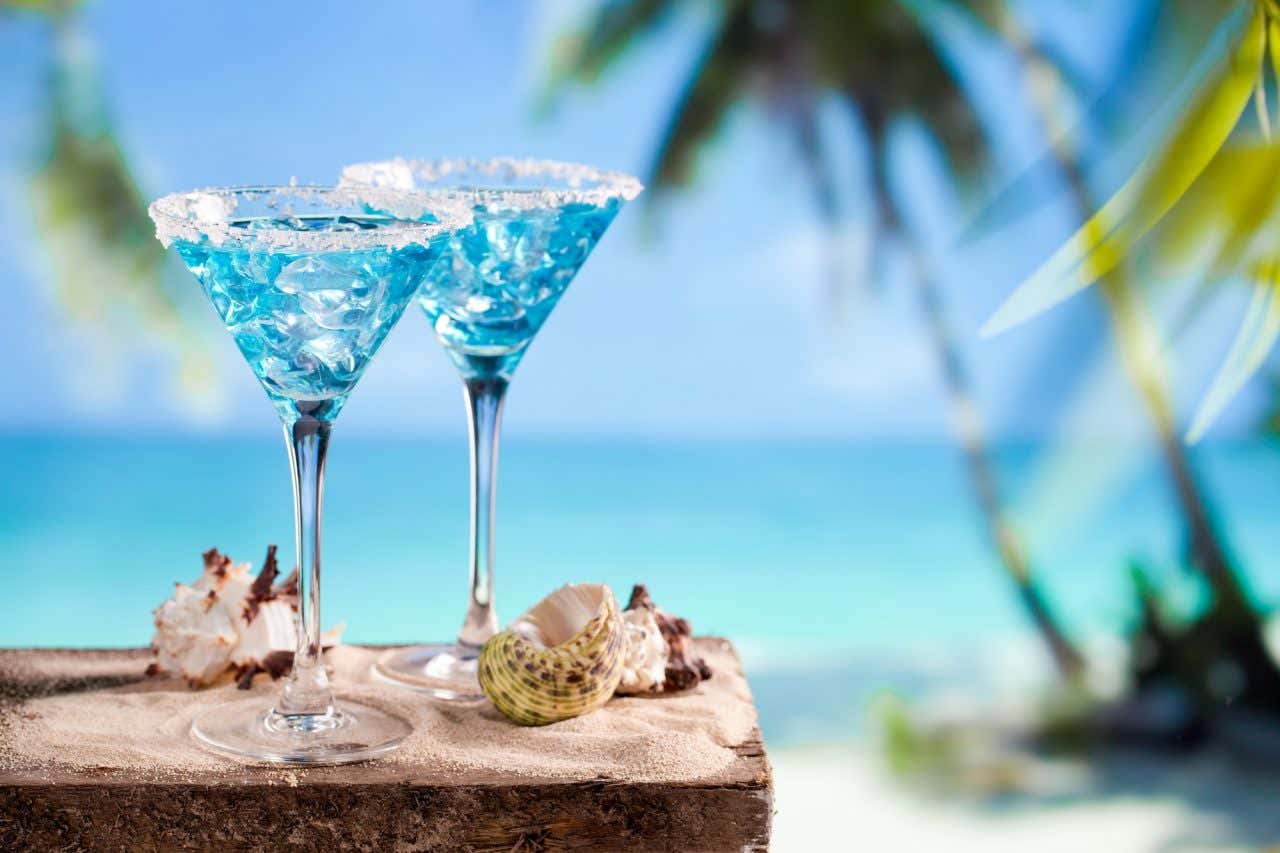
Travel Tips When Visiting Curaçao
What language is spoken in Curaçao?
While Dutch is the official language, the everyday language spoken on the island is Papiamento—a creole blend of Portuguese, Spanish, Dutch, English, and African languages. However, while it’s nice to learn some key words and phrases before you visit, English and Spanish are widely used across the island, thanks to Curaçao’s vibrant tourism industry and close ties with nearby regions.
When is the best time to visit?
With its tropical climate, Curaçao is a great destination year-round. However, the dry season from December to April typically offers the most comfortable weather with minimal rain. The rainy season (May to November) is the low season, often resulting in fewer crowds and more attractive prices.
What is public transport like on the island?
Renting a car is the best way to explore Curaçao. U.S. driver’s licenses are valid on the island, so you won’t need an international permit. Ride-sharing services are not available on the island, and public transport is limited. However, taxis and hotel shuttle services are reliable alternatives.
What currency is used in Curaçao?
The official currency is the Netherlands Antillean Guilder (ANG), but U.S. dollars are widely accepted in most tourist areas. It’s advisable to carry cash on the island, as many vendors on the island will not accept credit cards.
Do you need a visa to visit Curaçao?
U.S. citizens do not need a visa to stay in Curaçao for up to 90 days. Just ensure that your passport is valid for the duration of your trip. Besides your passport, you may be required to fill out a Digital Immigration Card online prior to travel, and it’s wise to have proof of accommodation, a return ticket, and travel insurance that covers medical expenses. Additionally, check if you need any vaccinations (such as yellow fever, if applicable) based on your travel itinerary.
There you have it! Those are our top things to do when visiting Curaçao, and some travel tips to keep in mind for your visit. If you’re still looking for ways to better spend your time when visiting, check out more tours & experiences in Curaçao with Civitatis.






